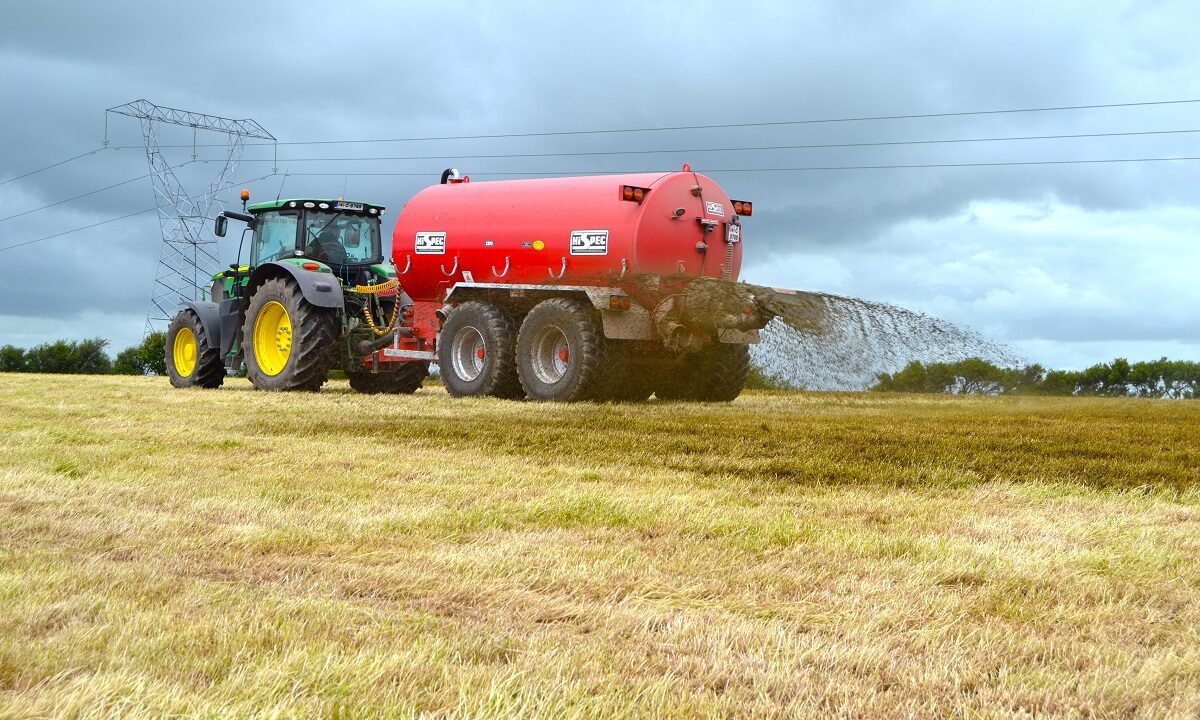Not removing livestock from a slatted shed prior to agitating is the biggest risk taken by farmers when working with slurry, Senior Inspector with the Health and Safety Authority of Ireland, Pat Griffin has said.
Griffin was speaking to Agriland of his concerns around working safely with slurry as farmers in parts of the country from today are allowed to begin spreading slurry with the closed period ending.
“Not moving livestock can lead to a very dangerous situation. A farmer’s immediate reaction when they see an animal falling is to try and save them.
A farmer will run in to try and save the animals, this would be like running into a fire, but the flames aren’t there.
In a situation like this farmers could be running to their death, as a single lungful of hydrogen sulphide can kill a person, he said.
Preparation and planning are key tools for farmers to use in order to reduce the dangers when working with slurry he said.
“We now know about the risks involved and we know the process that has to be taken to avoid these risks.
Despite all of the safety guidance and leaflets available, people are still taking risks.
However, one aspect that has improved slightly is accidents involving PTOs, the HSA Inspector said.
“Things have improved with PTO shafts, there has been no fatal accident involving a PTO in the past five years, but there have been some serious accidents.
“Research has show that between 30-40% of farmers have admitted to using machinery without a proper PTO safety guard,” he said.
Dangers Around Slurry
The two particular safety and health problems that arise when dealing with slurry is drowning and gas poisoning, the HSA believe.
Slurry gas is a mixture of gases including methane, carbon dioxide, ammonia and hydrogen sulphide, while one of the biggest dangers involving slurry is that many of the harmful gases are odourless.
High levels of this gas can be released when slurry is agitated which can cause instant death with just one breath or lung-full.
The HSA recommends that open tanks should be enclosed by an unclimbable fence or wall that is at least 1.8m high with locked gates.
The installation of a platform with safety rails, to be used when the open tank has to be emptied is also advisable.
Safety Around Slatted Tanks
Manhole covers should be fitted to agitation points on slatted tanks which children cannot open, according to the HSA.
The authority also recommends that a safety grid is installed below the manhole, in order to provide secondary protection at the agitation point that, where possible, should be placed outdoors.
Key safety points to keep in mind from the HSA when agitating:
- Avoid smoking and naked flames as the gas mixture can be highly flammable.
- Never enter a tank for any reason as gases can build up and remain in partially emptied tanks.
- Put up warning signs to warn of the dangers when working with slurry.
- Only agitate where there is good air movement.
- Open all doors and outlets to provide a draught.
- Keep all people away from the agitation point for 30 minutes after starting agitation.
Meanwhile, Teagasc’s National Health and Safety Specialist, John McNamara, echoed the advice given by the HSA in regard to handling slurry.
McNamara doesn’t agree with or encourage the use of gas meters when working with slurry, something the HSA also agrees upon.
We don’t encourage the use of gas meters. If the measurement being taken by the meter is wrong then someone could die.
“The most dangerous time for gases is when the crust is broken and the initial precautionary time after agitating has begun,” he said.



